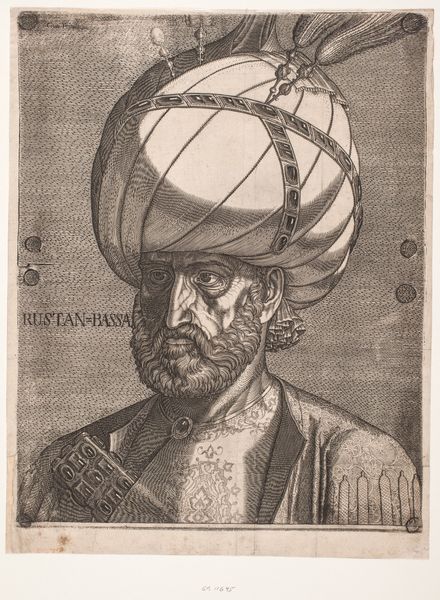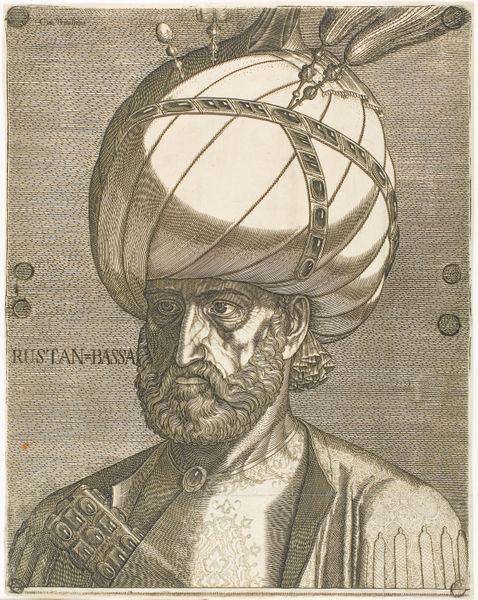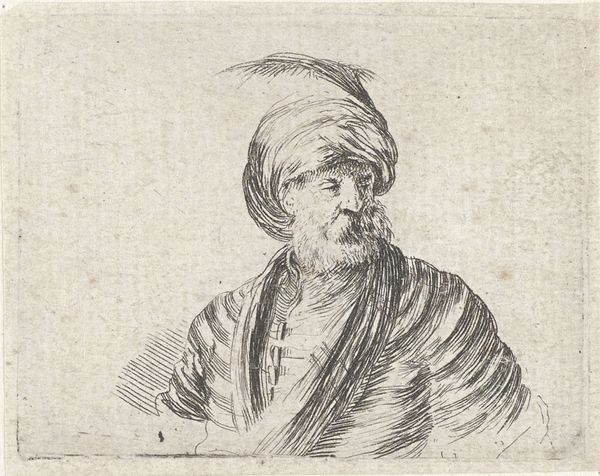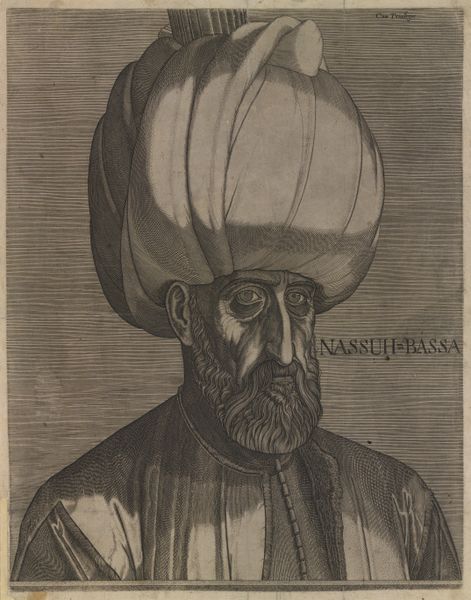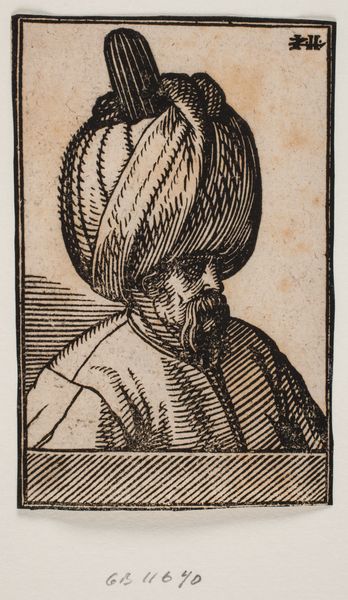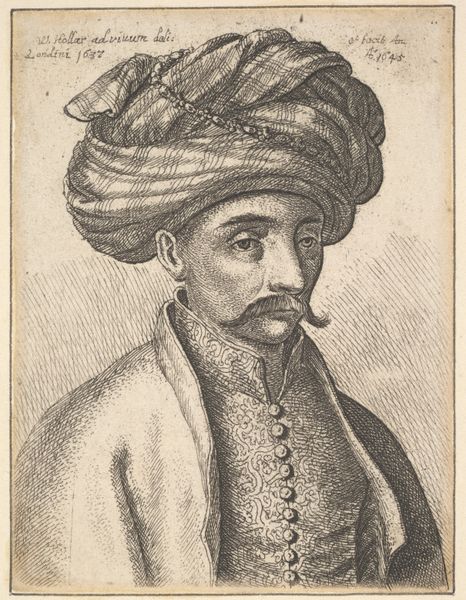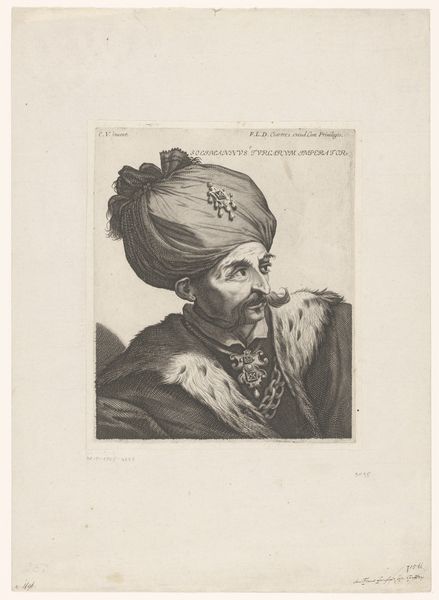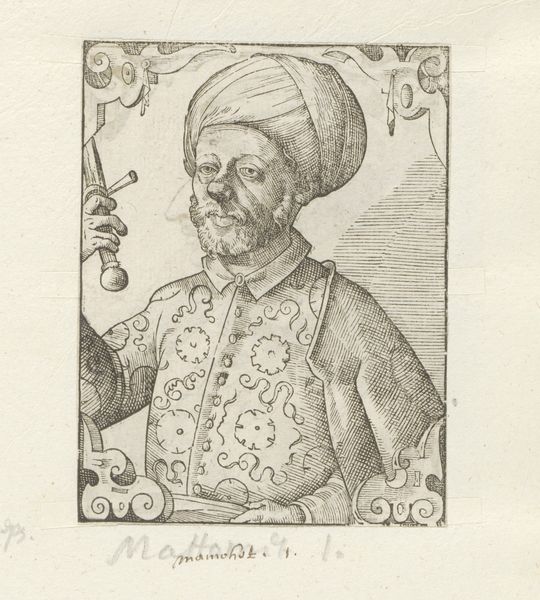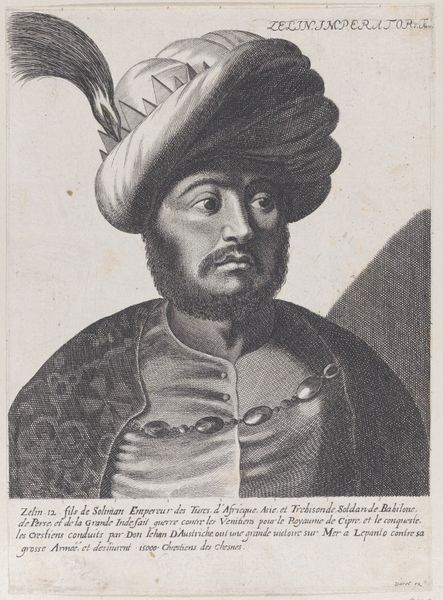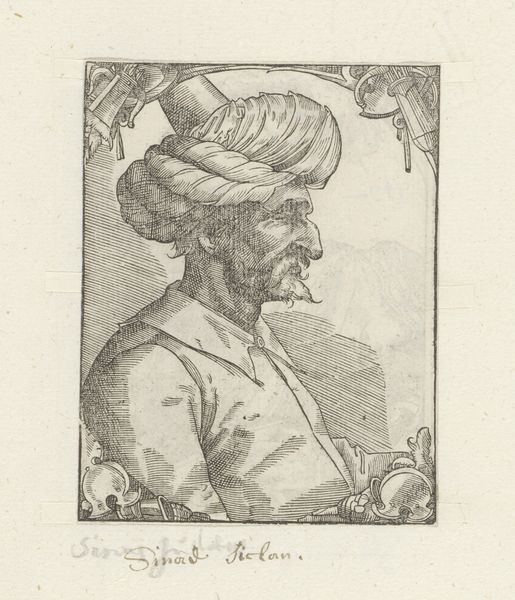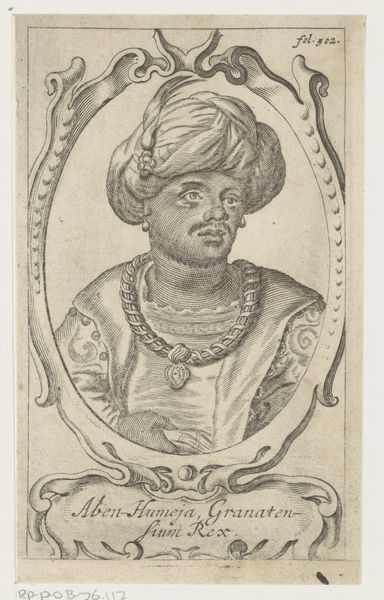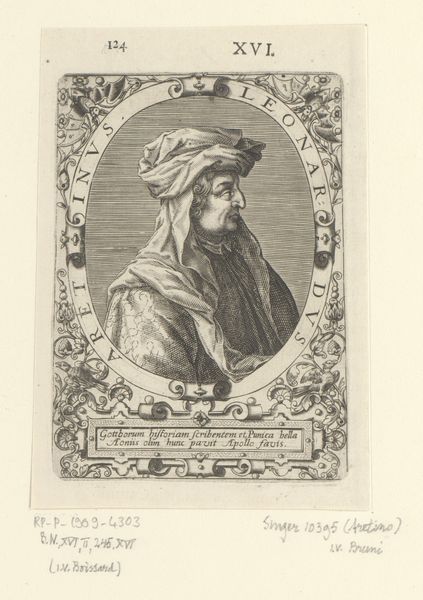
print, engraving
#
portrait
# print
#
asian-art
#
islamic-art
#
history-painting
#
engraving
#
portrait art
Dimensions: 405 mm (height) x 288 mm (width) (billedmaal)
Curator: Editor: So, this is "Prince Ismael, Persian Envoy" by Melchior Lorck, created in 1562. It’s an engraving, quite detailed for its time. The texture and pattern work almost gives it a fabric-like feel despite being a print. What are your initial thoughts? Curator: Considering the time and place of its production, what do you make of the choices of engraving as a medium? How does the process itself contribute to the dissemination of this image and perhaps, specific understandings of the Persian envoy? Editor: Well, because it's a print, the image could be reproduced multiple times, facilitating distribution. So, was the material choice connected with reaching the most people? Curator: Precisely! Think about the socio-political landscape of 16th-century Europe. An engraving allows for relatively inexpensive reproduction, thus wider circulation. How might this affect the perception of a Persian envoy within European society at that time? Was it an attempt to understand the “other,” or perhaps something more politically driven related to trade or alliances? The material is integral to understanding function. Editor: Interesting, I never really considered it like that before! I guess prints were almost like propaganda? Curator: Not necessarily always "propaganda," but certainly a powerful tool. Furthermore, the labour involved in creating an engraving - the time, the skill - elevates the status of the image. What was typically circulated? To whom? Understanding who this was intended for helps understand the context of reception. Does this challenge, perhaps, more traditional ideas of high art made by the elites, when in fact these kinds of images played different roles across society? Editor: That does challenge what I’ve assumed about art back then. Thanks for providing a perspective of considering not just *what* but *how* something was made, and who it was *for*. Curator: Exactly! Now you're looking at the artwork in context, from a material point of view, opening doors for a more layered analysis.
Comments
No comments
Be the first to comment and join the conversation on the ultimate creative platform.
